Despite a relatively recent journey into the world of coaching, Jorge Bava has begun to take positive strides and find his feet in management since retiring. Since taking over his former club, Liverpool Montevideo, he has gone from strength to strength in order to propel the club up the table and contend for the Uruguayan championship. With the league-best points earned and goals scored in 2023, Jorge Bava finds himself not only managing his side in the Copa Libertadores next season but also in the Championship playoff with the opportunity to bring the first Primera Division title in the club’s history.
Having achieved such feats in only his second full season in charge of Liverpool, Bava has consequently earned the praise of his peers, with his managerial services being monitored by clubs looking to lure the young manager away. With speculation regarding a potential move to Uruguayan heavyweights Nacional or even Argentinian club Tallares Cordoba, it is clear that Jorge Bava is becoming one of South America’s most recognised coaching talents.
Throughout this tactical analysis, we will take a deeper dive into Bava’s tactics with Liverpool and provide an analysis of how Jorge Bava has moulded his team into title challengers through his positive philosophy.
Attacking phase
A testament to their free-scoring form this year would be the tactical style that they employ both in their build-up play and the attacking third of the pitch. Throughout the majority of the Primera Division season, Jorge Bava has set his side up in a 4-3-3, with a dynamic midfield trio adjusting to the needs of the side in and out of possession. Liverpool has adopted a single pivot who can drop deep into the defensive line in order to receive the ball and provide additional support in the build-up, drawing attention from opposing players and creating further passing outlets.
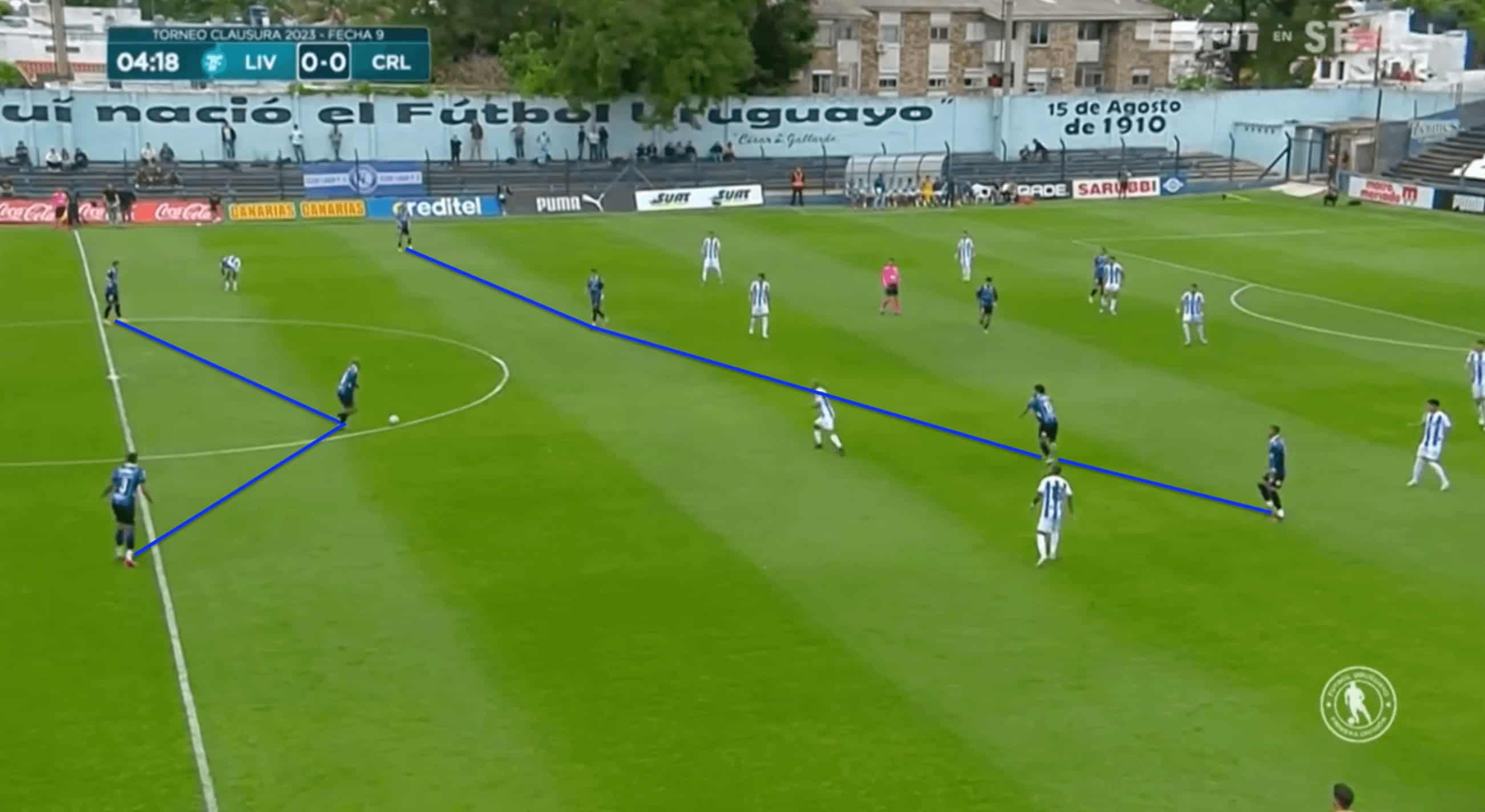
Pablo Siles acts as the single pivot, dropping deeper to combine with the two centre-halves and utilising space created by his advanced midfield duo.
This then creates additional space for their two number eights to provide a more offensive role but also have the ability to come back in transition. When we see overlapping runs from the fullbacks or even just overloads in the wide areas in general, Liverpool’s advanced midfielders can occupy offensive areas and make late runs into the box to assist the attacking unit and impose themselves on the game. Bava’s side looks to be flexible and fluid within their roles, with the number eights often interchanging with the wingers to allow them to have a higher presence in the half spaces and create more goal-scoring opportunities.
When building out from the back, we often see Liverpool setting up in the 3-2-5 or 3-4-3, depending on the depth of their fullbacks. The likes of Miguel Samudio and Federico Pereira have the freedom of the flanks, with permission to progress forward to join the attacking trio or solidify a four-man midfield, depending on the stage of progression. Samudio has adopted the left-wing back role due to Periera’s defensive duality and quality, with the physical and tactical expertise to provide adequate cover moving across into central defence.
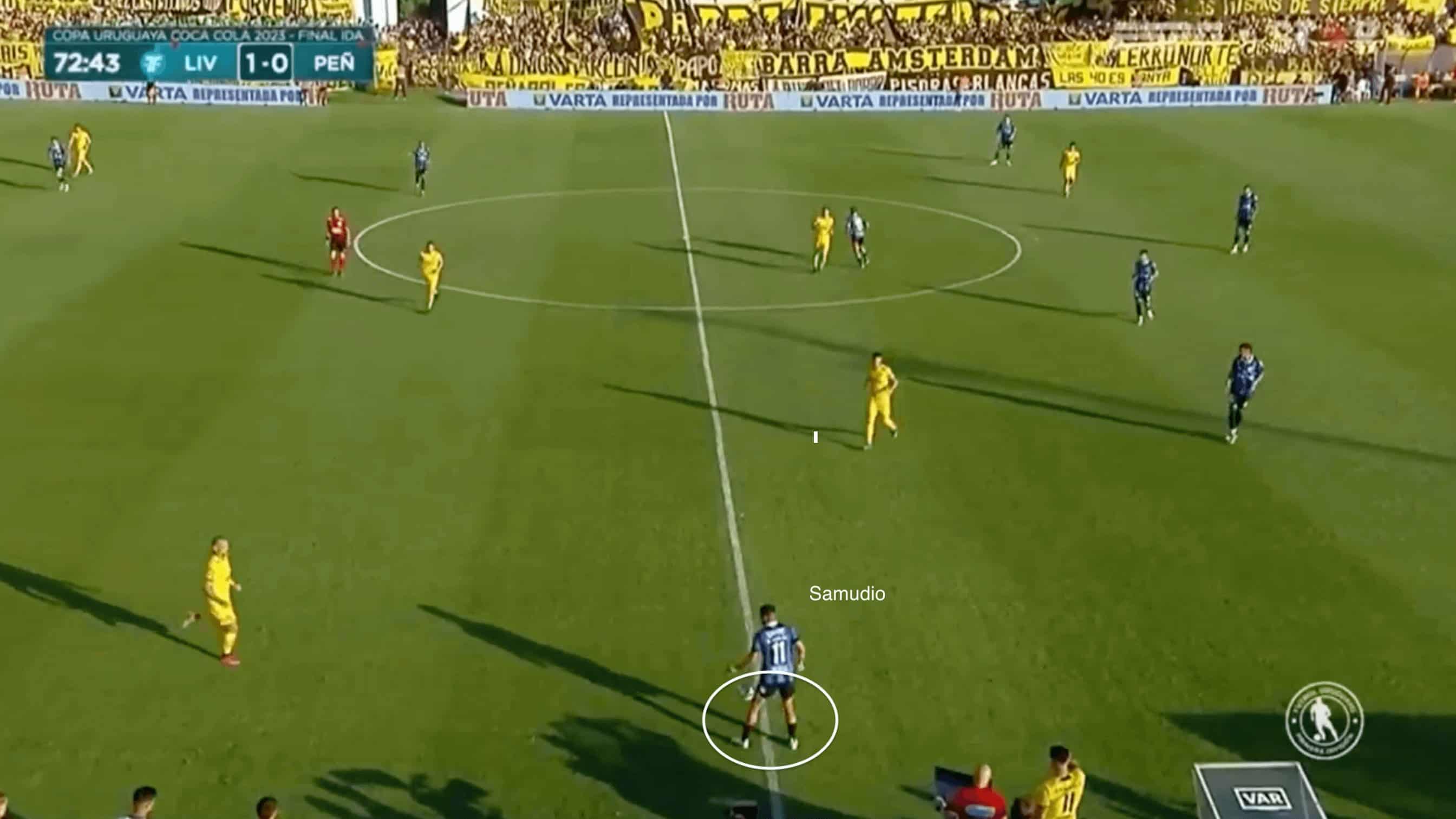
The 5-man attacking front seems to play well into the hands of Liverpool’s key attackers, with reduced space between them where they can execute close control and killer runs through the channels. The imposing figures of Thiago Vecino and Ruben Bentancourt are an excellent fit for Bava’s theorised progression, with them often dropping deeper to receive the ball. This not only allows him to combine effectively with his central midfielders, but it also draws defensive attention away from Liverpool’s wide threats.
An interesting aspect of Jorge Bava’s philosophy is his ability to adapt and alter his tactical style when facing a particular challenge. A recent example of this would be in the opening leg of the Uruguayan championship playoff against Penarol, in which he found the game goalless at half-time. Having previously been stifled by Penarol, Bava elected to replace one of his advanced midfielders for another centre forward, thus creating a 4-4-2 in possession.
This important tweak not only allowed Liverpool to maintain their offensive focus by keeping personnel in key areas to apply pressure to the Penarol backline but also forced the remaining central midfielders into deeper roles in order to add balance and protect against the counter. Evidently, this alteration worked in Bava’s favour, with a 2-0 victory putting them in prime position to be crowned Uruguayan champions.
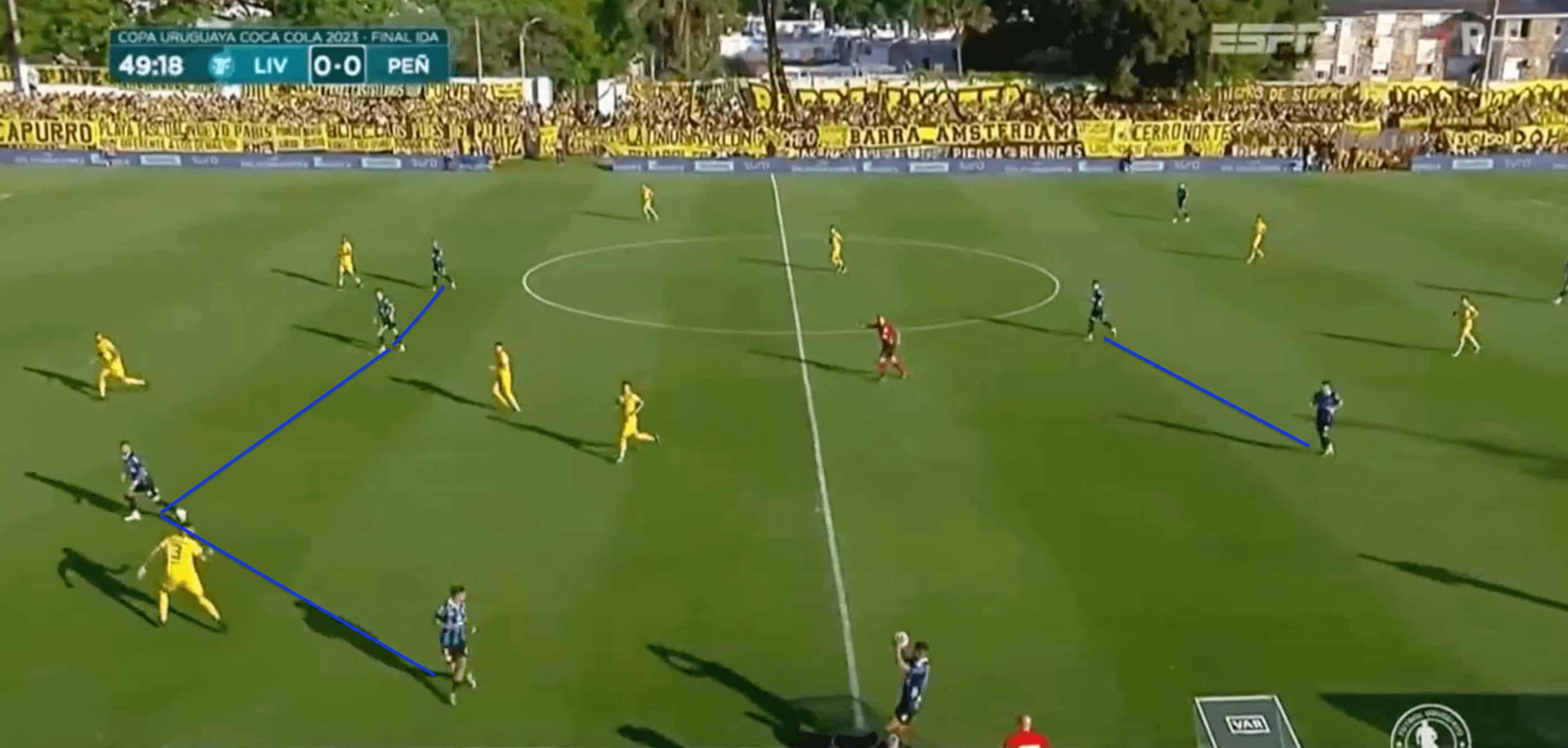
In the playoff against Penarol, Bava elected for two holding midfielders, whilst an additional striker created a four-man attacking front in the opposition’s third.
Defensive phase
Regardless of his side’s positive attacking performances within the Primera Division, we have observed interesting alterations as to how Jorge Bava sets his side up in the defensive phase of play. When playing against recognised tougher opposition or when attempting to conserve a positive result, we have seen a different Liverpool side from the outset, usually sacrificing one of their wide midfielders for a more recognised central defender. This contributes to the goal of frustrating their opponents whilst maintaining the ability to be effective on the counter.
This has often come in the form of the 5-3-2, with the usually advanced full-backs incorporating more of a defensive mindset, looking to create a committed back line. Coupled with the intense man-for-man pressing from the dynamic midfield trio, Bava looks to negate the impact of the opposition through central areas and, therefore, increase levels of frustration and the propensity for passes to be forced over the top of their low block.
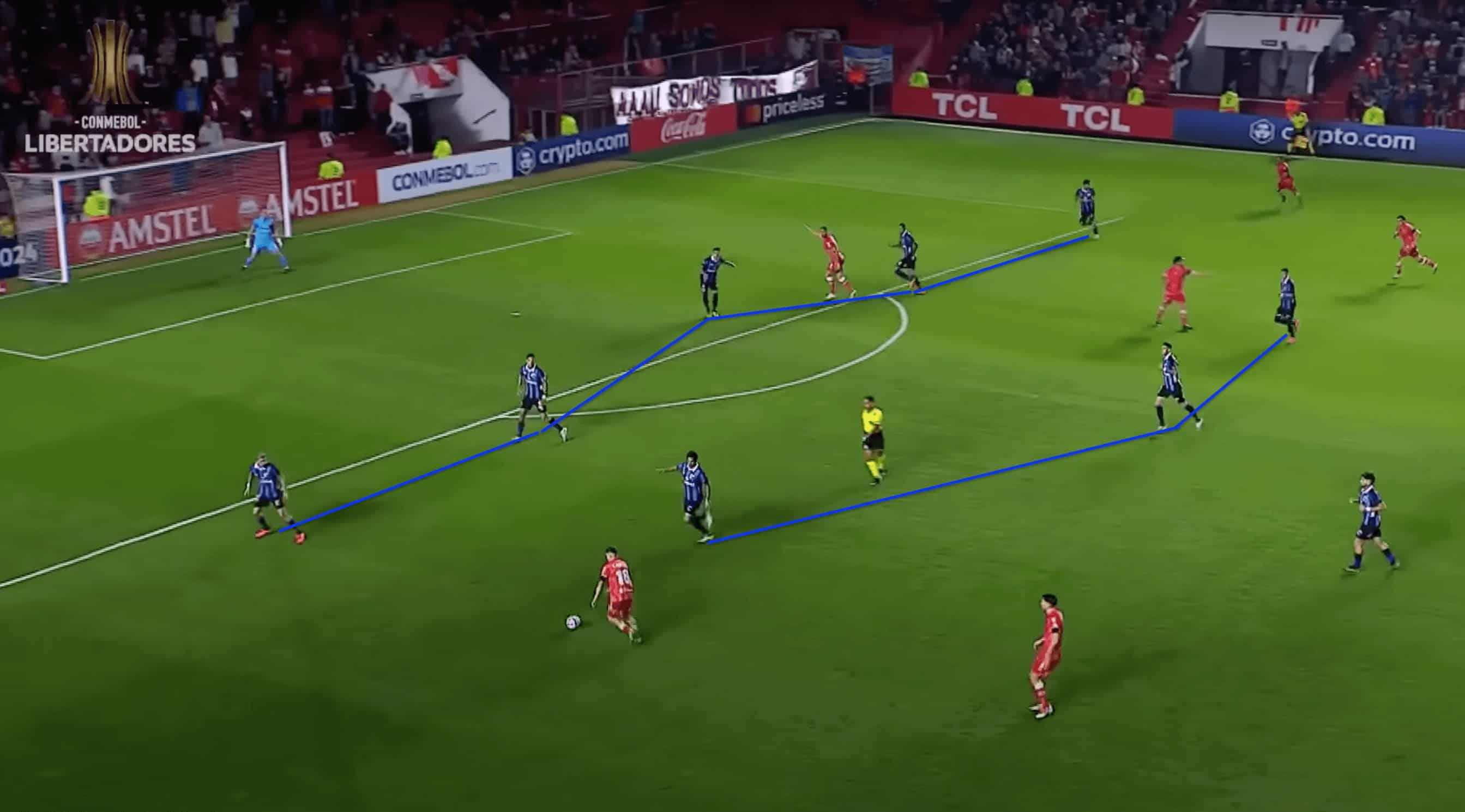
Bava’s 5-3-2 is critical to maintaining their exceptional performances, aiming to stifle the opponent’s attack in the centre of the pitch.
The positioning of the two attacking outlets in this system is particularly intriguing, affecting the play at both ends of the pitch. With the two strikers roaming ahead of the midfield, they provide the outlet when counterattacking, with increased numbers up the pitch to play off one another and negate the isolation you would see with a single target man. Additionally, their attacking presence affects the decision-making of the opposition and their ability to commit players forward to break Liverpool down — with defending in transition being a key priority.
Liverpool’s strikers will also find themselves dropping deeper to support the midfield, creating a 5-man zone almost. Consequently, these extra bodies in the centre of the pitch can remove passing outlets and force the opposition to keep playing the ball wider, where Liverpool has the positional advantage and overload capable of winning back possession.
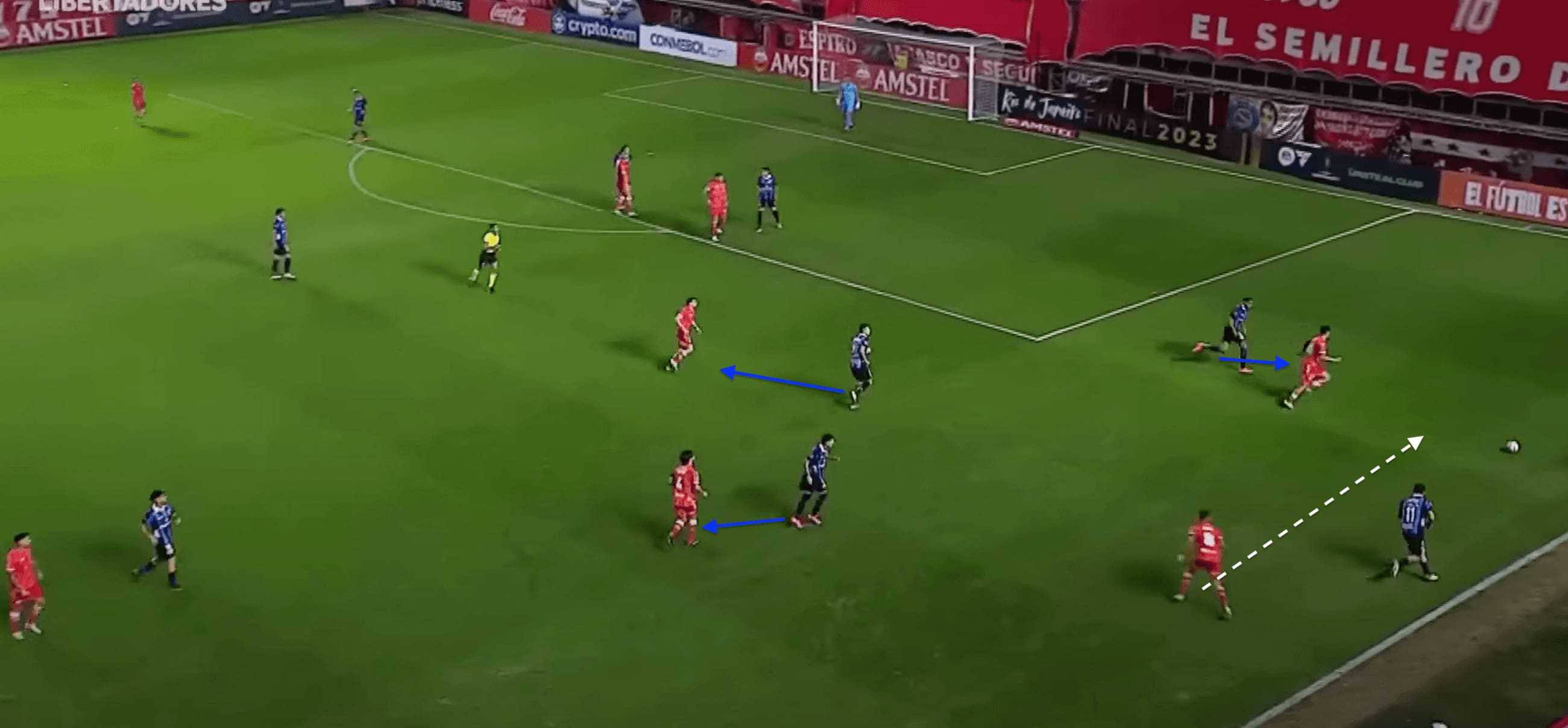
Their man-to-man pressing style with an overload in the central areas forces the opposition to attack the space on the flanks. This often leads to unsuccessful crosses or turnover in possession due to additional Liverpool support.
Strengths
A key strength of Jorge Bava’s Liverpool side would be their vertical presence and ability to create positive play in the air. Having the likes of Ruben Bentancourt and Thiago Vecino leading the forward line is a huge contributing factor, with their aerial reach causing a multitude of problems for opposing defences from both dead-ball scenarios and open play. Liverpool’s inclination to dominate the wide areas perfectly plays into their game plan, with increased possession on the flanks creating key crossing opportunities for their players to flood the penalty area and attack.
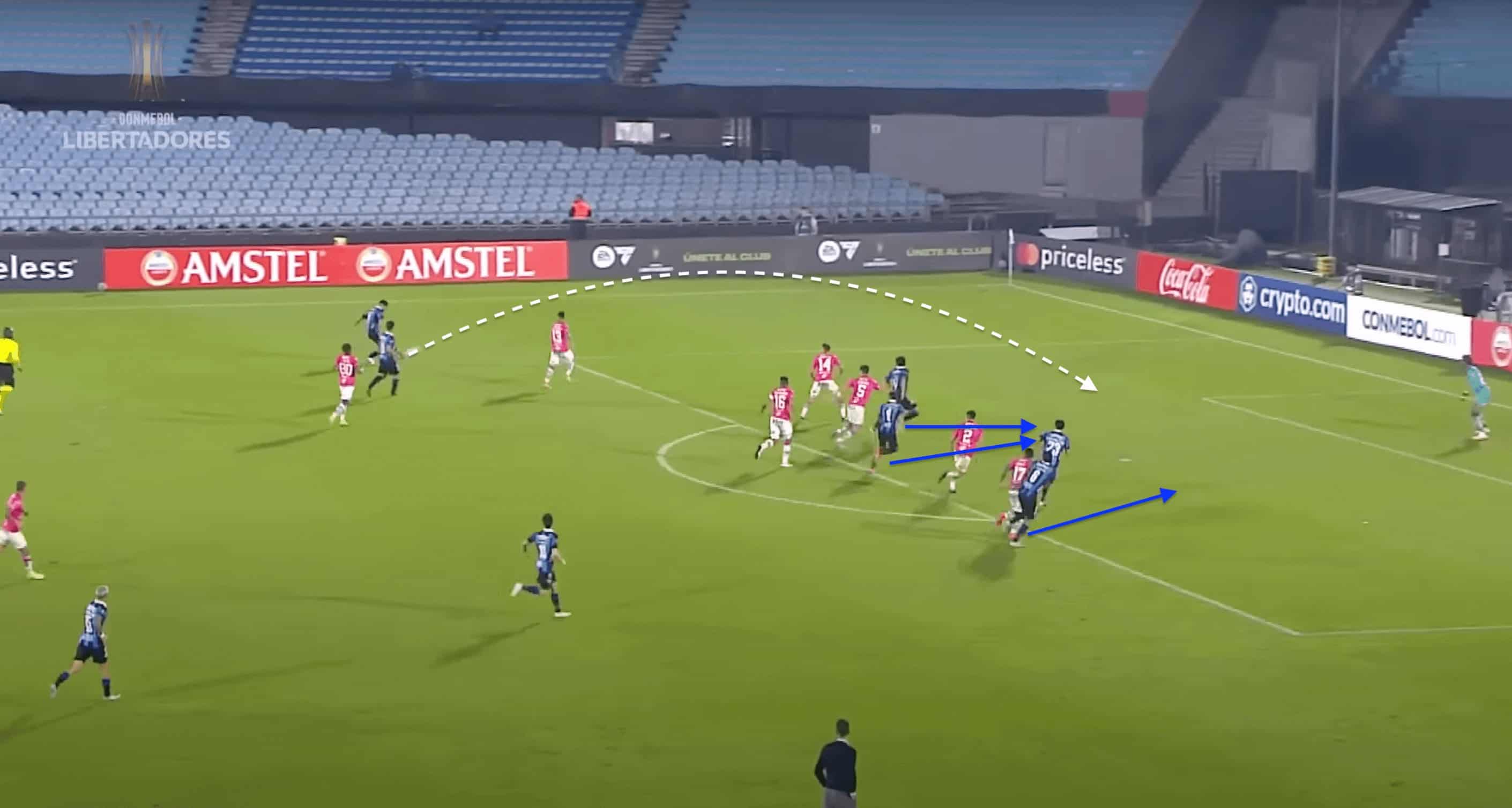
Jorge Bava’s side moulds their offensive style based upon their personnel, with creative wide players and aerially proficient attackers combining to be effective in front of goal.
Another managerial strength of Jorge Bava would be that despite his recognised adaptability, he possesses the readiness to maintain composure and see out his desired game plan when facing adversity. Something we have discussed more since Ange Postecoglou’s tenure at Tottenham, Jorge Bava was shown to maintain an attacking mindset despite the dismissal of a key player in the Championship playoffs. With the game hanging in the balance, Samudio was tasked with a more offensive role, progressing forward from the left-back position.
This resulting 3-4-2 formation provided more depth in attack and allowed Liverpool to control the pace of play. Regardless of Penarol also being reduced to ten men, it was Liverpool who applied pressure and caused the opposition to retreat into a low block. Not only does this sustain dominance when looking to win the game, but also protects against the counterattack should they lose the ball, with the opposition too far retreated to affect play quickly enough.
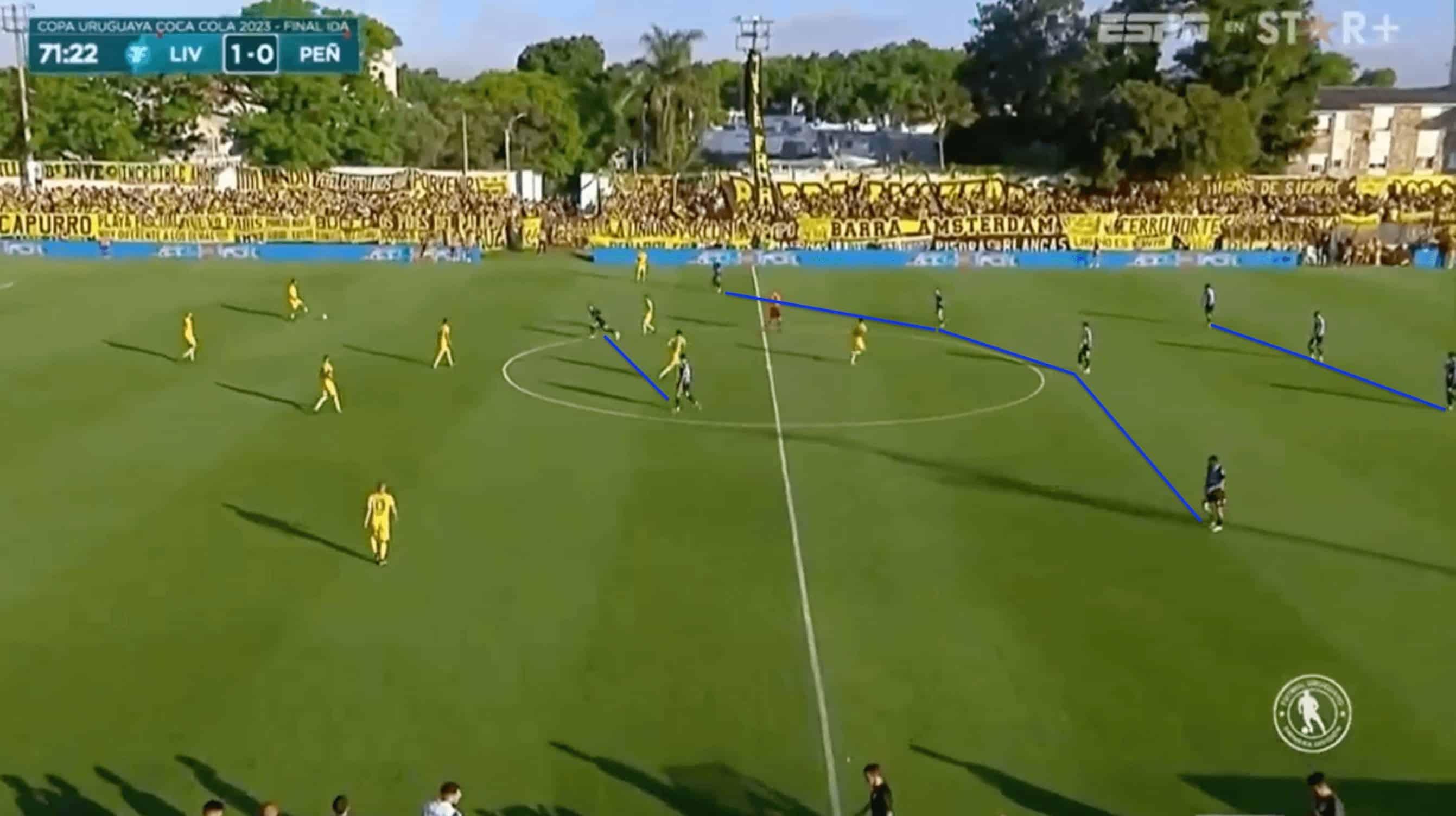
Bava’s confidence in his side resulted in a positive approach to being a man short against Penarol, with a high level of trust placed in his progressive mindset.
Weaknesses
Irrespective of their attacking prowess in the Primera Division, a point of weakness for Jorge Bava’s team would be their ability to defend in transition consistently. A large contributing factor to this would be their defensive shape and readiness to readjust once they lose the ball in the middle of the pitch. As we have previously highlighted, the movement of the Liverpool full-backs is invaluable to their creativity and success in front of goal. However, they find themselves in dangerous scenarios when possession is lost, and the likes of Samudio are caught too far forward. This inability to support the back line and reduced defensive structure leads to vulnerability in behind, with gaps resulting from covering runs.
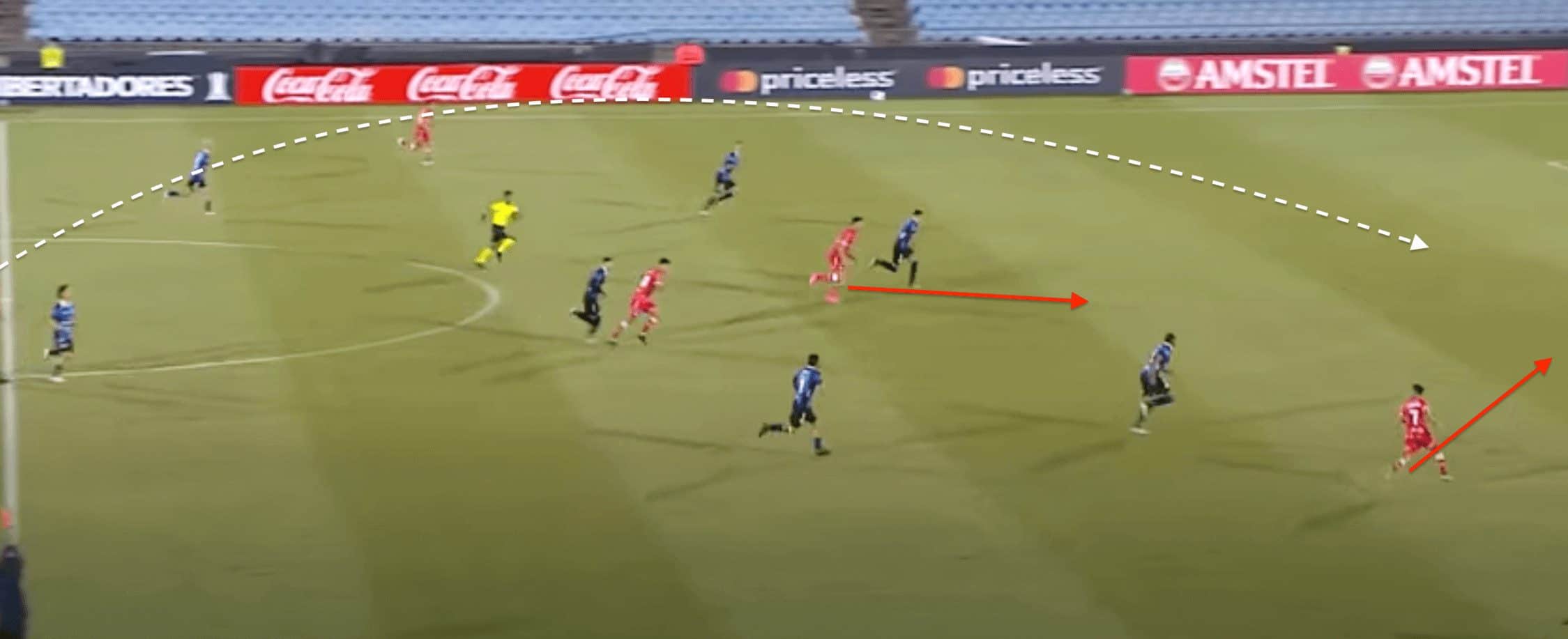
With the advancement of their defensive creators, Liverpool have been shown to be exploited by balls behind the defensive line due to a lack of cover and misaligned defensive shape.
Conclusion
Despite being far from the finished product at this stage of his managerial career, Jorge Bava has emphasised his tactical intelligence and subsequently transformed Liverpool Montevideo into a force to be reckoned with. On the back of tremendous success, he has believed in his philosophy and emphasised the importance of playing intensively. It will be incredibly interesting to see how recent events mould the future of his coaching path, finding clubs now scrambling to lure him away from Liverpool Montevideo, with considerable challenges and lessons on the horizon.

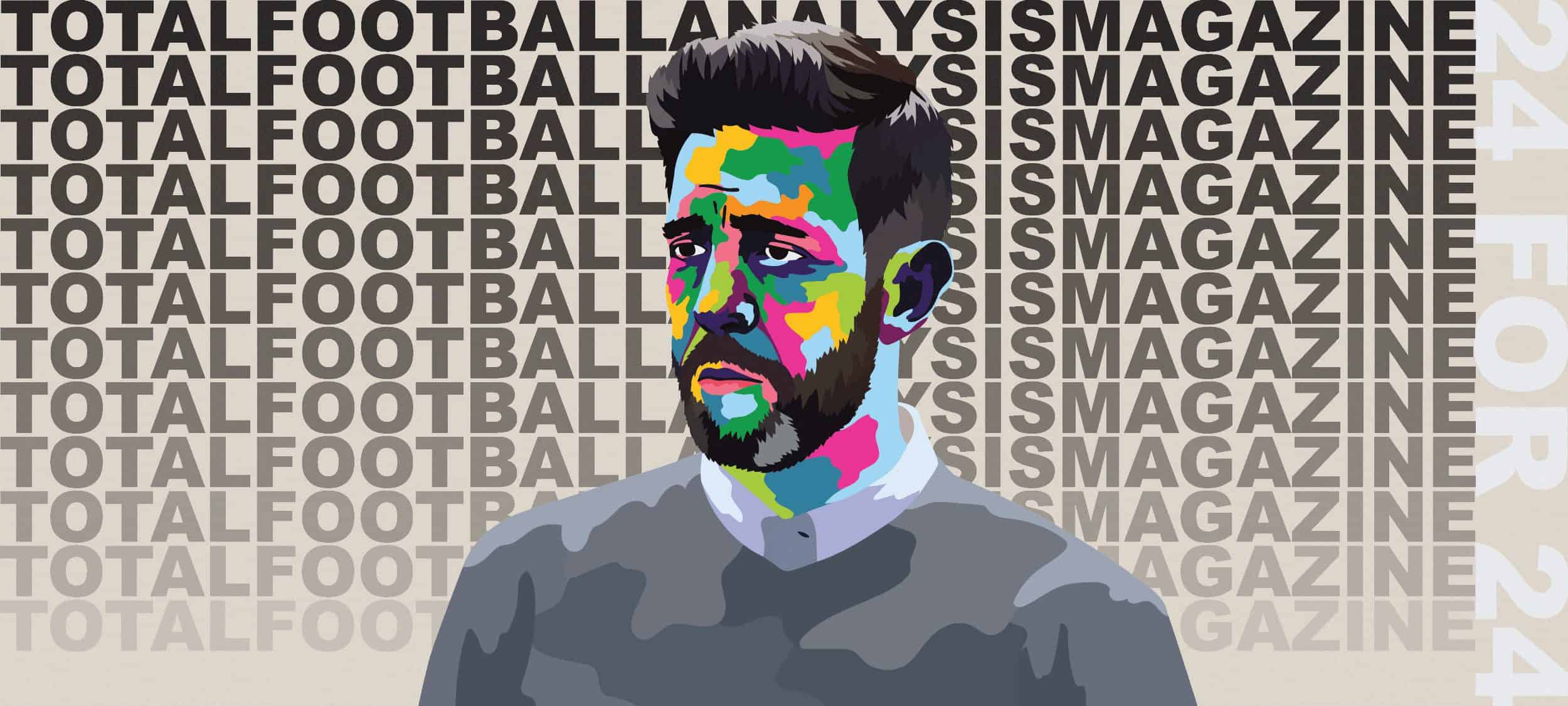


Comments